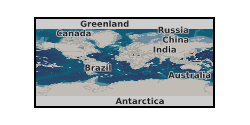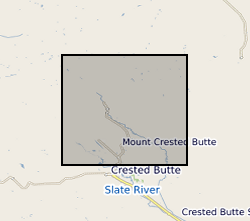Ions
Type of resources
Topics
Keywords
Contact for the resource
Provided by
Years
Formats
Representation types
Update frequencies
-
Method validation of IC-ICPMS with chlorine removal for phosphite analysis (NERC Grant NE/V010824/1)

Method development for trace-level analyses of phosphite in chloride-rich matrices. Dataset includes linearity data from the ion chromatograph (IC) in stand-alone mode and coupled to the inductively-coupled plasma mass spectrometer (ICP-MS), with and without removing chloride from the solution, as well as nuclear magnetic resonance (NMR) data for phosphorus species. The results demonstrate successful removal of the chloride matrix for analyses of phosphite in solutions at sub-ppb concentrations. Additional details about the methodology are published in Baidya, A.S. and Stüeken, E.E., 2024, Rapid Communications in Mass Spectrometry, 38(1), p.e9665.
-

The measurements and data contained here were obtained to study the chemical weathering of sedimentary rocks, and more specifically the oxidation of rock organic carbon and the associated release of CO2. The primary aim was to better understand the production and mobility of the trace element rhenium during weathering, because this element has been proposed as a proxy for rock organic carbon oxidation. The study focused on three Alpine catchments that drain sedimentary rocks, which all experience moderate to high erosion rates where oxidative weathering rates are thought to operate faster. Two catchments were located in Switzerland - the Erlenbach and Vogelbach, and one catchment in Colorado, USA - the East River. To study chemical weathering and the production and mobility of rhenium, a suite of samples were collected to capture the source and products of weathering reactions. These focused on stream and river water, river sediments and weathering profiles collected on sedimentary rocks. The Swiss catchments, water samples were collected from 2011 and 2012 to capture changes in river flow and seasonal changes in hydro-climate. Samples were collected from a gauging station operated by the Swiss Federal Institute for Forest, Snow and Landscape Research - WSL. In the East River, samples were collected from the gauging station operated by the Lawrence Berkeley National Laboratory Watershed Function Scientific Focus Area from 2015 and 2016. Additional samples included snow samples collected from the Erlenbach. All water samples were analysed for their major dissolved ion content by Ion Chromatography. Dissolved rhenium concentrations were determined by High Resolution and Quadrupole Inductively Coupled Plasma Mass Spectrometry. Solid samples were digested and analysed for Re content by ICP-MS. These geochemical measurements were paired with water discharge data to quantify the flux of dissolved elements, using rating curves and flux-weighted average methods, and interpret the hydrological context of ion production and mobility through the landscape. This new data acquisition was funded by a European Research Council Starting Grant to Robert Hilton (ROC-CO2 project, grant 678779) and a Natural Environment Research Council (NERC), UK, Standard Grant (NE/I001719/1). Further details of subsequent data analysis and interpretation can be found in Hilton, R.G., et al., 2021, Concentration-discharge relationships of dissolved rhenium in Alpine catchments reveal its use as a tracer of oxidative weathering, Water Resources Research
 NERC Data Catalogue Service
NERC Data Catalogue Service